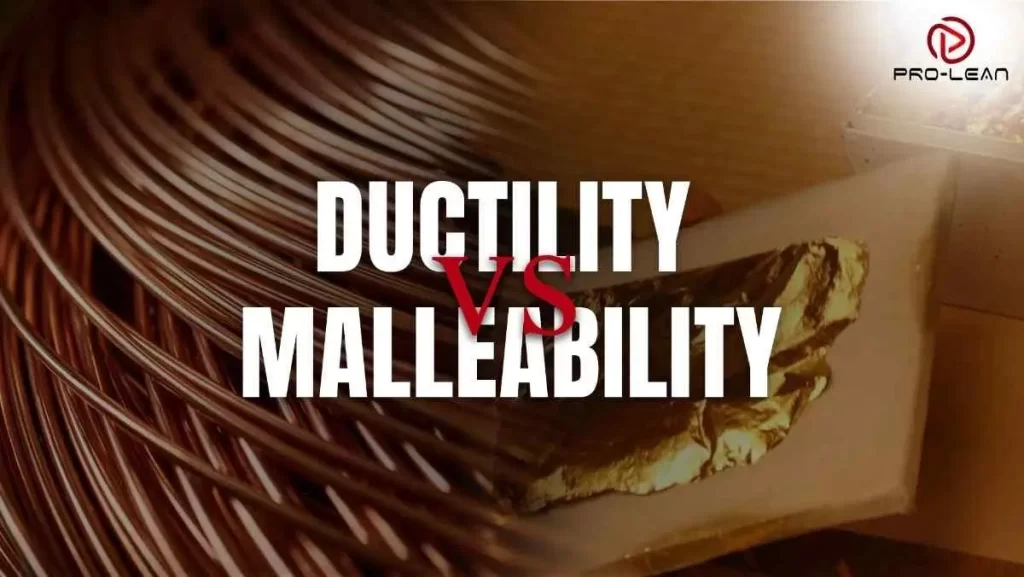
Ductility vs. Malleability
Picking the wrong material can cost your business a lot of money due to production hold-ups and parts breaking. In precise manufacturing, knowing about ductility (how much a material can stretch) and malleability isn’t just technical stuff; it gives you an edge over competitors.
These basic properties directly affect how efficient your manufacturing is, how reliable your products are, and ultimately, your profits. Whether you’re choosing copper for electronics or aluminum for planes, a bad choice leads to more waste, lower quality, and unhappy customers.
At ProleanTech, we understand that choosing the right materials is a big concern for industry leaders. Our manufacturing know-how helps you pick materials that perfectly fit your production needs and performance targets.
This guide will help you master ductility and malleability, transforming your manufacturing process from guesswork into a smart strategy.
Learn more about CNC Machining Explained: Process, Techniques & Costs to see how material selection directly impacts machining efficiency and cost-effectiveness.
What Is Ductility?

Ductility of Materials
Ductility is the ability of a material to withstand large plastic deformation under tension before it breaks. This allows metals to be drawn into wire or stretched into thin sections without failing.
Ductile materials are resistant to shock loading and fatigue so are ideal for critical components such as suspension systems, electrical conductors and load bearing structures.
Knowing is metal ductile is key to your material selection process as this property affects manufacturing feasibility and component performance.
Mechanism Behind Ductility
At the atomic level ductility occurs because small defects called dislocations can move through the crystal structure of metals.
When the metal is drawn atoms transfer to each other along some paths with slip planes. It stretches the metal without breaking immediately.
Metals like copper, aluminum and gold are very ductile because they have a face centered cubic (FCC) structure. This type of structure has multiple slip systems so it’s easier to move atoms.
How fast the dislocation moves determines how much a material can start to stretch before it starts to neck and then break.
Metals with low grain boundaries or low impurities spread more because these obstacles can block the movement of dislocations.
Influence of Temperature On Ductility
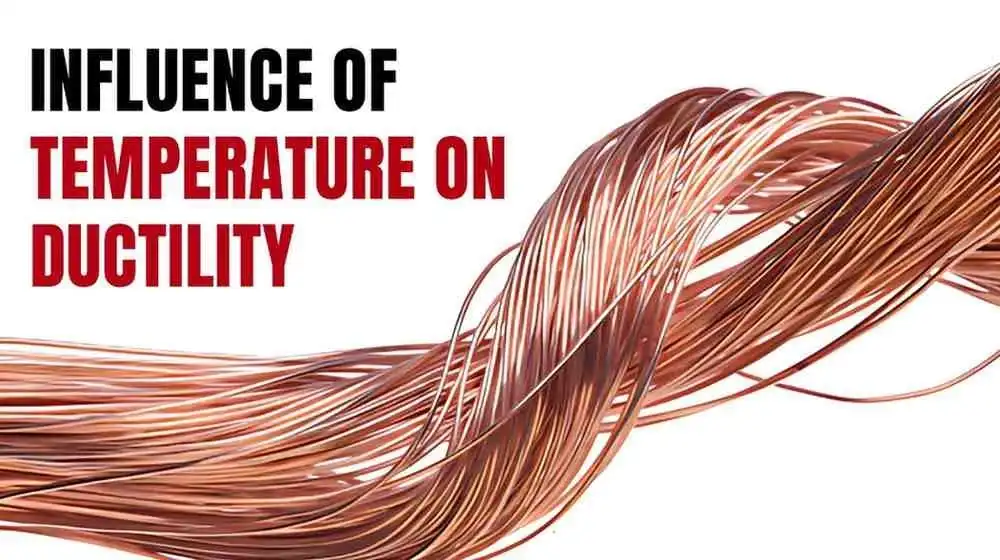
Influence of Temperature on Ductility
The temperature plays an important role in the expression of ductility. As the thermal energy increases, atomic mobility improves, reducing the strength of the yield and becoming plastically deformed to increase the capacity of the material.
This phenomenon explains why hot working procedures, such as forging and extrusion, are usually used to shape metals in complex geometry.
Conversely, at low temperatures, some metals can transition to a phenomenon from a domain, known as the ductile-to-brittle transition. This effect is particularly relevant in cryogenic applications and must be considered during material selection for cold environments.
Learn more about Press Fit Tolerance and how it relates to material properties in precision manufacturing.
Why Ductility Matters In Engineering Applications?

Why Ductility Matters in Engineering Applications?
Ductility is important for reliability and safety. In structures, ductile material effects can soak up energy and spread focused stress, which prevents things from sudden breakdown. For example:
Car parts: suspension parts and chassis frames need to be very flexible. This helps them to handle continuous forces for a long time.
Electrical wire: Copper is great at conducting electricity, but it is also very flexible. This means that it can be drawn into thin wires without breaking.
Airplane parts: Aluminum alloys in airplane frames mix mild weight with sufficient flexibility to prevent cracks from spreading.
Measuring Ductility: Elongation and Reduction in Area
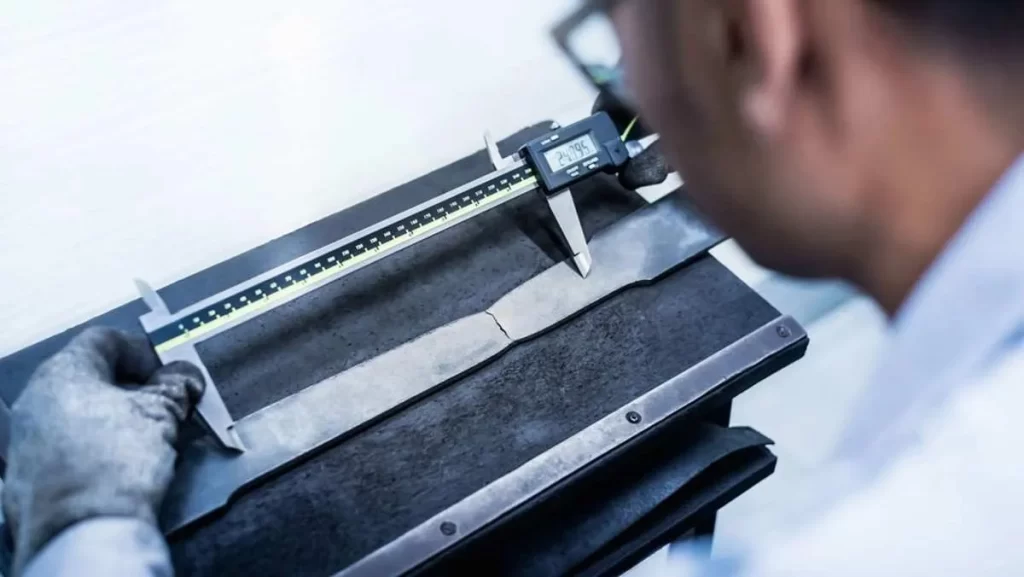
Measuring Ductility: Elongation and Reduction in Area
We measure the ductility of a material (how much can break and change size) with a standard tensile test. This test gives us two major numbers:
Percentage Elongation (%EL): It is how long a material becomes before snaping compared to its original length.
Reduction in Area (RA): It is how much the cross-section (cut surface) of the material shrinks where it breaks.
These numbers help engineers compare different materials and predict how they will behave under stress.
Ductility in Action: Real World Uses
Here are some everyday ductility examples in action:
Copper: We use a lot of copper in electrical systems. It is very good to conduct electricity and because it is very ductile, we can draw it into long thin wires for all types of wiring.
Aluminum: Aluminum is ductile in a wide temperature range, so it is very cold or good in a very hot environment. It can draw without breaking under difficult conditions, so it is a reliable option for many industrial components.
Gold: Gold is one of the most ductile metals out there. We can stretch it into super thin wires which are used for delicate jewelry and tiny wires inside computer chips (microchips).
These materials are chosen for jobs where a part breaking would be a huge problem. Their ductility helps prevent failures so things stay safe and work correctly.
Try Prolean Now!
What Is Malleability?
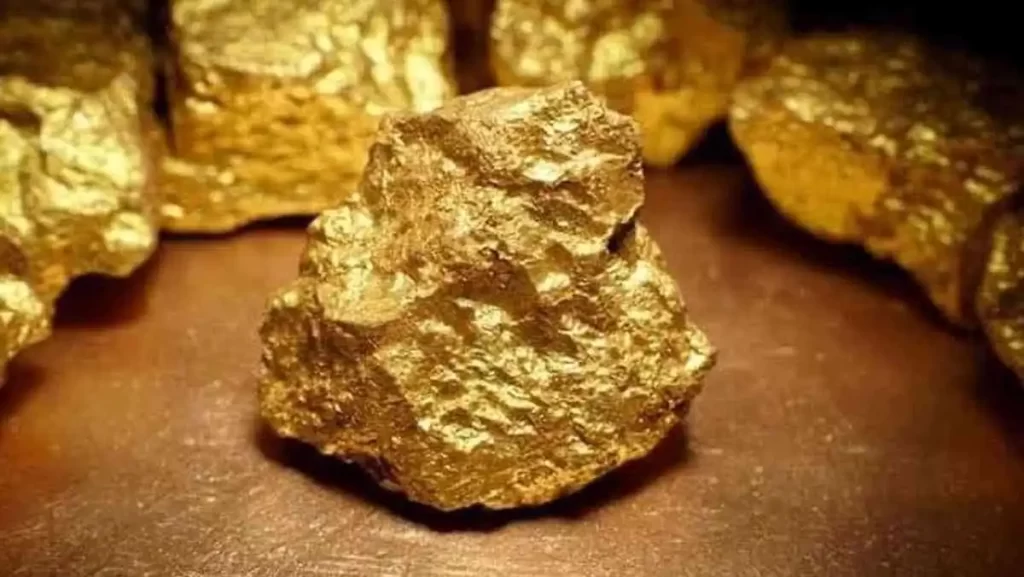
Malleability of Gold
Think of Malleability as a material capacity, which is squash or pressed without fracture. This is actually important for manufacturing methods such as rolling, stamping, and forging, which include applying force to reshape a material in all. A truly malleable substance can be flattened into sheets or plates without any cracks or tears.
Atomic Mechanism of Malleability
Just as some metals can be spread in wires, so much of how easily the Malleability comes from small internal flaws, called dislocations, can rotate inside the metal structure. But rather than pulled, malleable metals are good when they are squash or compressed when they are squashed or compressed.
The metals that have the right internal structure and “slip systems” (methods can allow their layers to slide) are usually very malleable. For example, take gold and lead. They are incredibly malleable because they are soft and can easily slide past each other when their layers are pressed. This is why they are perfect for making a really thin sheet.
Check out our Fillet Machining Complete Guide to understand how material properties affect machining operations.
Importance of Malleability In Manufacturing

Importance of Malleability in Manufacturing
Malleability affects the efficiency and viability of direct operation. Materials with poor malleability are at risk of hardening and cracking during stamping or pressure, causing a scrap rate and delay in production.
Industries in which a lot of trust is placed:
Sheet Metal Fabrication: Used extensively in automotive body panels and architectural cladding.
Jewelry making: Gold and silver are shaped in complex designs through hammering and pressing.
Heavy equipment construction: Components such as gear and housing are formed using malleable cast iron or steel alloys.
Measuring Malleability: Practical Assessment Techniques

Measuring Malleability
Unlike ductility, which is measured using standardized tensile tests, malleability is usually checked through practical tests, including:
Hammer Test: How does a material behave when repeatedly hit?
Rolling Trial: How much material can be diluted without testing on the surface?
Compression test: Check how much a material is squeezed under controlled pressure.
These test makers help man decide that any material can handle some size procedures and help to choose the correct processing settings.
Common Malleable Materials
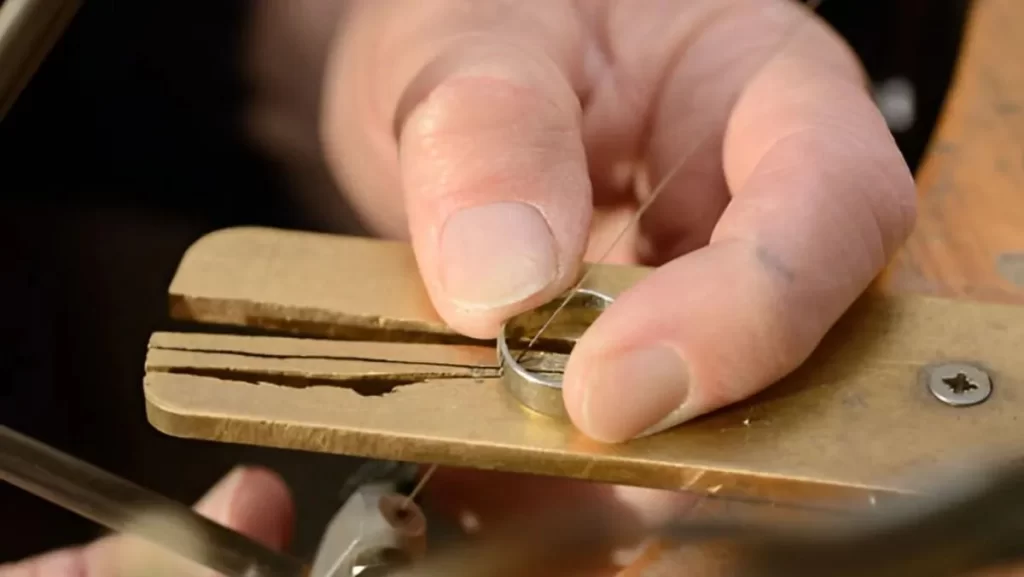
Common Malleable Materials
Understanding malleability examples helps in proper material selection:
Lead: Although health concerns are less common today, lead remains highly malleable and was historically used in roofing and radiation preservation.
Aluminum: Excellent malleability is displayed, especially in annealed conditions, it is suitable for deep drawing and rolling.
Gold: Exhibits extreme malleability, allowing it to be flattened for decorative and electronic applications.
These are examples of materials that industrial settings support both artistic and functional purposes.
What is the Difference Between Malleability and Ductile?

Key Differences Between Ductility and Malleability
While both ductility and malleability pertain to a material’s ability to deform, they differ fundamentally in the type of stress involved:
| Aspect | Ductility | Malleability |
| Type of Stress | Tensile (pulling/stretching) | Compressive (pressing/hammering) |
| Deformation Direction | Elongation in one direction | Flattening in multiple directions |
| Typical Applications | Wire drawing, cable manufacturing, structural components | Sheet metal fabrication, rolling, stamping, and forging |
| Testing Method | Tensile test (ASTM E8/E8M) | Hammer test, rolling trial, compression test |
| Measurement Units | Percent elongation (%EL), Reduction in Area (RA) | Thickness reduction without cracking |
| Failure Mode | Necking followed by fracture | Cracking or splitting under compression |
| Temperature Sensitivity | Generally increases with temperature | Varies by material, some decrease at high temperatures |
| Common Examples | Copper wires, steel cables, aluminum extrusions | Gold leaf, aluminum foil, copper sheets |
| Industrial Priority | Critical for load-bearing applications | Essential for forming and shaping operations |
| Material Behavior | Can stretch significantly before breaking | Can be flattened without surface defects |
It’s also important to note that a material may exhibit high ductility but limited malleability—or vice versa—depending on its composition and microstructure.
Plastic CNC Machining – Types of Plastic for CNC Machining requires an understanding of both ductility and malleability properties to achieve optimal results.
Are All Metals Ductile or Malleable?
Most metallic materials have different degrees of both ductility and malleability. However, the limit of each property depends on such factors as:
- crystal structure
- Alloy composition
- Processing history
- Operating temperature
For example, pure metals usually show higher ductility and malleability than rigid or alloy versions. For example, the raw iron is brittle and displays minimum ductility or malleability, limiting its use in operation.
Can A Metal Be Ductile But Not Malleable?

Can a Metal be Ductile but not Malleable?
The question “are nonmetals ductile?” reveals important material science principles. Yes, some metals or alloys can display high ductility by showing poor malleability. This scenario usually occurs when a material can increase considerably under tension, but lacks the ability to deform uniformly under compression.
An example includes some high-strength steels that have been heat-treated to optimize tensile properties. These materials perform well under stress, but careful procedure may cause cracks or be divided during stages compressed during the requirements of the the plan.
Try Prolean Now!
Case Studies: Gold and Steel
Here are two case studies:
Gold – A Benchmark for Malleability
Gold stands out for its extraordinary malleability, allowing it to be hammered into thin sheet thinner than a human hair. This characteristic makes it ideal for gilding, decorative finishes, and microelectronic contacts where analog coatings are required.
Steel – Dominance in Ductility
Steel, particularly low-carbon varieties, is renowned for its ductility. It can be drawn into cables, bent into beams, or rolled into sheets without fracture. High-strength, low-alloy (HSLA) steel balances ductility with enhanced strength, supporting modern infrastructure demands.
These examples illustrate how material properties align with specific application needs, guiding selection criteria in engineering design.
Read more: CNC Machining Cost Optimizing Strategies
ProleanTech – Why Understanding these Properties Matters?

Understanding ductility and malleability properties
It’s not just about how strong or tough a material is. It’s also about how flexible and moldable it is – these things decide how a material can be formed during manufacturing and how it will behave when used. This affects how parts are to make, how long they will last and how safe they are.
If you’re in CNC machining, casting or metal manufacturing you need experts who really understand these material properties. This helps use the material in the best way and makes the process smoother and faster.
For example ProleanTech makes very precise parts by knowing how each material behaves when pushed or stretched. Choosing the right material for the job reduces waste, keeps parts consistent and makes the final product better.
Conclusion
Ductility and malleability are two physical properties that show how metals behave when force is applied. Ductility means a metal can be stretched into wires, malleability means it can be pressed into shapes. These are important when choosing the right metal.
Understanding the difference helps engineers and designers make good decisions, better products and results. Choose ProleanTech for materials and CNC machining help.
Explore how our CNC Machining Services can support your next project by Get Your Quote today or Contact with ProleanTech Experts for personalized assistance.

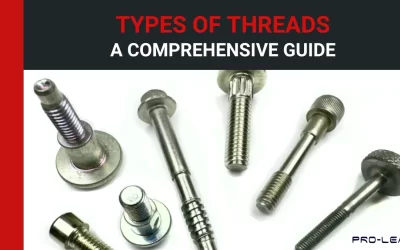

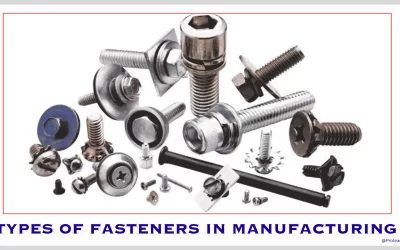
0 Comments